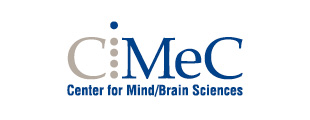Overview
At BCD Group, we study the biological and cognitive basis of communication in infants. We are interested in how infants perceive and process social signals such as direct eye contact, referential gaze and infant-directed speech. On the other hand, we are interested in understanding how communication drives and shapes infants’ cognition, what is its role in different domains of development such as perception, language development, understanding the meaning of words, understanding that other people have their own thoughts and beliefs and learning in general.
Depending on the specific research question, we use different methods and measures. These can be simple behavioural methods such as gaze behaviour and looking time, more sophisticated eye tracking paradigm, or methods that measure neural correlates, such as EEG including ERPs, Time-Frequency analysis of the EEG and Frequency Tagging, fNIRS.
Our research spans across a variety of different topics, such as the perception of ostensive signals, the development of language and the comprehension of words’ meaning, the relationship between labels and categories, Theory of Mind.
Research directions
- Neural and cognitive basis of communication in newborns and infants - we study how babies process simple communicative signals, such as direct eye contact, and what they do with such signals. We are interested in understanding what happens when infants realize that adults address them with the intention to pass information, how and what they learn from such communicative interactions;
- Ostensive communication and language development - we study how communication can facilitate certain aspect of language development, such as understanding that words have a meaning and that humans use words as symbols referring to external entities, such as objects or events;
- Labels and categorization - we study the relationship between language and concepts. In particular, we investigate how infants use words in order to build new conceptual categories and how language can be a tool to define the cultural boundaries of their linguistic community.
Members
- Eugenio Parise, Principal Investigator;
- Ambra Ferrari, PhD, Marie Curie Fellow
- Giulia Mazzi, PhD Student
- Luisa Cutrone, PhD Student
- Alice Guerrini, Research Assistant
- Matilde Barucci, Research Assistant
Alumni
- Tibor Tauzin, PhD, University of Vienna, AT
Publications
For a complete list, see Eugenio Parise personal page
Grants
-
PRIN 2022 PNRR, PI Eugenio Parise
-
PRIN 2022, Co-PI Eugenio Parise
-
Fondazione Caritro 2023 Scienze Umanistiche, Co-PI Eugenio Parise
Ongoing collaborations
- Gergely Csibra (Central European University, HU);
- György Gergely (Central European University, HU);
- Judit Gervain (University of Padua, IT);
- Stefanie Höhl (University of Vienna, AT);
- Ildikó Király (Eötvös Loránd University, HU);
- Ulf Liszkowski (University of Hamburg, DE);
- Olivier Mascaro (University of Paris & CNRS, FR);
- Vincent Reid (University of Waikato, NZ);
- Victoria Southgate (University of Copenhagen, DK);
- Gert Westermann (Lancaster University, UK).
- Stefania Benetti (CIMeC)
- Francesco Pavani (CIMeC)
- Luca Surian (DIPSCo)
- Teresa Farroni (Padova)
- Viola Macchi Cassia (Milano Bicocca)
- Dora Kampis (University of Copenhagen, DK)
- Barbara Pomiechowska (University of Birmingham, UK)
- Louah Sirri (Manchester Metropolitan University, UK)
- Bálint Forgács (Eötvös Loránd University, HU)

